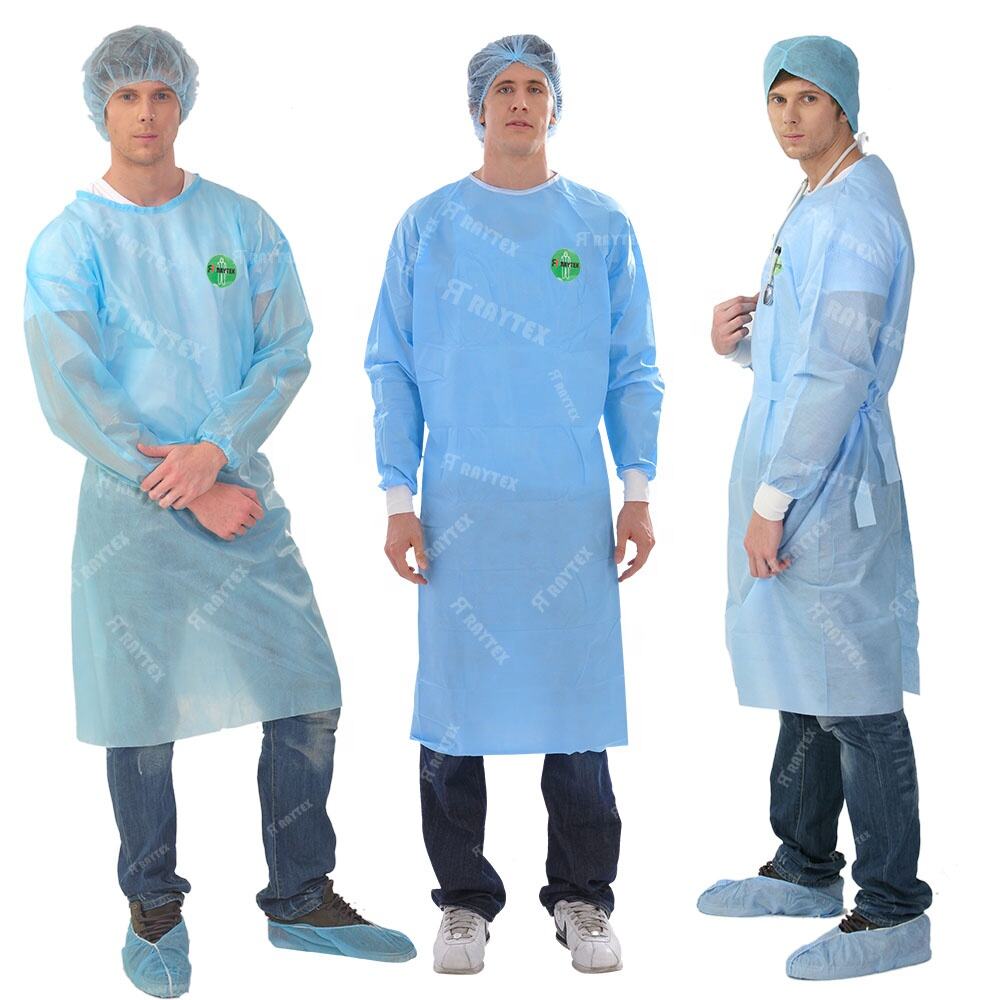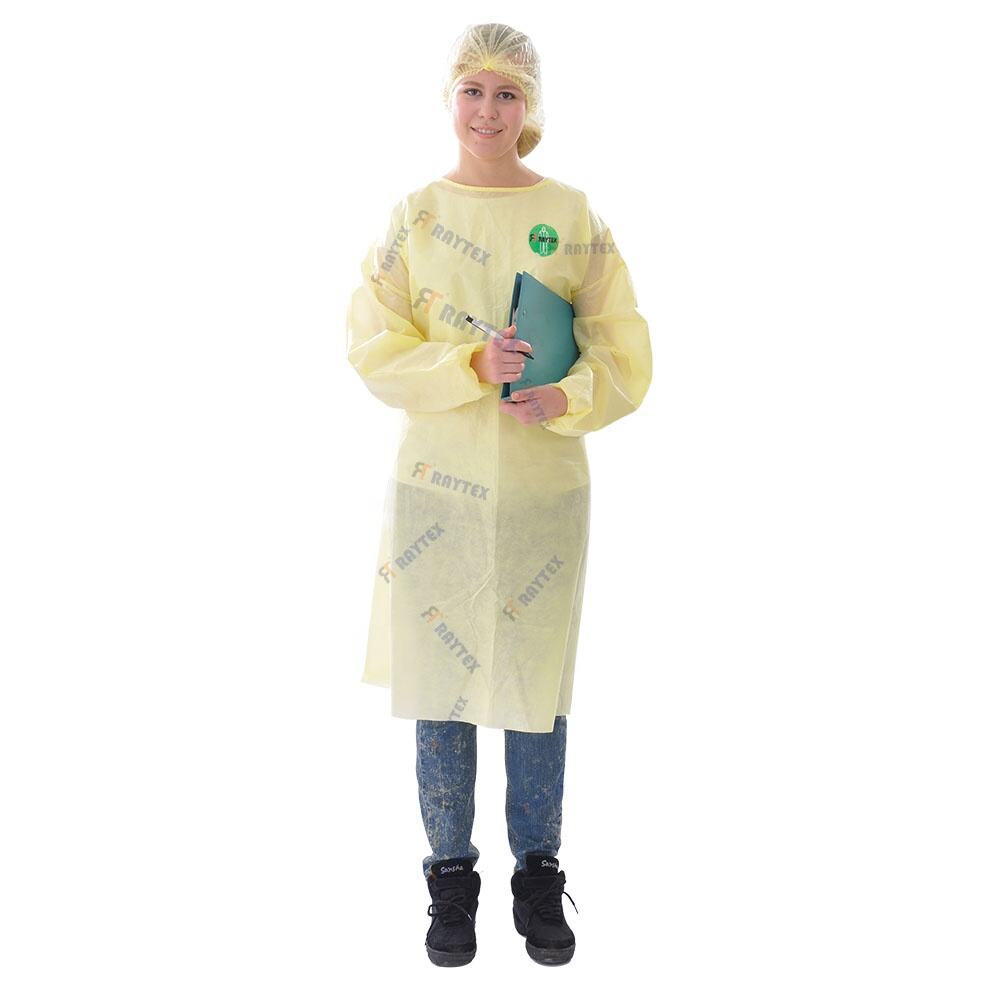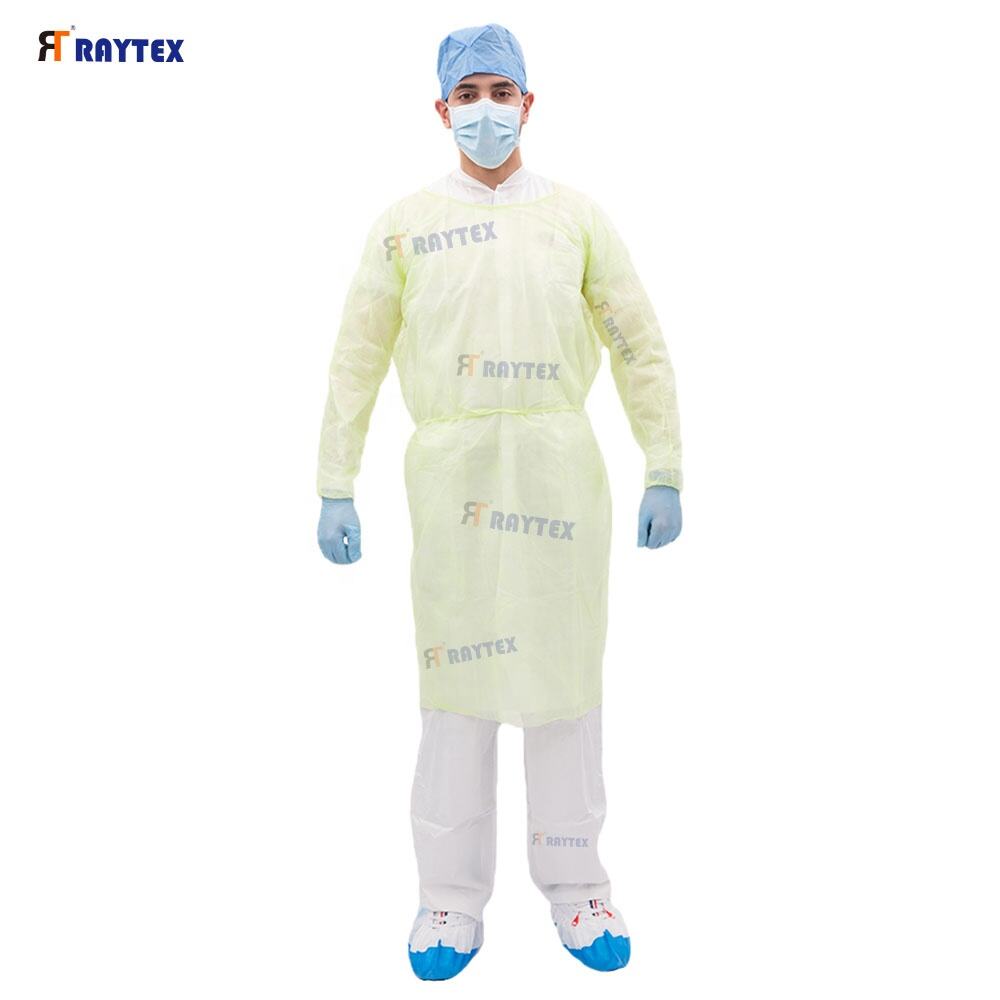Isolation gowns with air tight design are specialized protective garments engineered to create a complete barrier against airborne contaminants, liquid splashes, and particulate matter, making them essential in high-risk environments such as biohazard labs, chemical handling facilities, and infectious disease isolation units. These gowns are constructed from advanced materials like coated Tyvek, butyl rubber, or laminated polyethylene, which are impermeable to gases, liquids, and microorganisms while maintaining sufficient flexibility for movement. The airtight design is achieved through several key features: sealed seams (either heat-welded or taped) prevent air leakage, eliminating gaps where contaminants could penetrate. Elasticized cuffs, ankles, and necklines create a snug fit against the body, while a full-length zipper with a storm flap ensures the front closure remains airtight. Some models include a built-in hood and boot covers, forming a complete enclosure that integrates with respiratory protection (e.g., SCBA or powered air-purifying respirators) for maximum safety. Durability is critical, with materials tested to withstand punctures, tears, and chemical exposure—resistant to acids, bases, and organic solvents commonly encountered in hazardous environments. The fabric is also designed to resist degradation from UV light or extreme temperatures, ensuring performance in diverse settings. Compliance with international standards is rigorous, with gowns meeting EN 14126 (Protective clothing against infective agents) for biohazard protection and ASTM F1671 (Standard Test Method for Resistance of Materials Used in Protective Clothing to Penetration by Blood-Borne Pathogens Using Phi-X174 Bacteriophage) for liquid barrier efficiency. For chemical protection, they adhere to EN 13034 (Protective clothing against liquid chemicals) and NFPA 1991 (Standard on Vapor-Protective Ensembles for Hazardous Materials Emergencies). These gowns are typically disposable to prevent decontamination challenges, though reusable variants exist for specialized applications, designed for sterilization via autoclaving or chemical treatments. By providing an airtight seal, they protect workers from exposure to lethal pathogens, toxic chemicals, or radioactive particles, making them indispensable in scenarios where even minimal contamination could have severe consequences.


